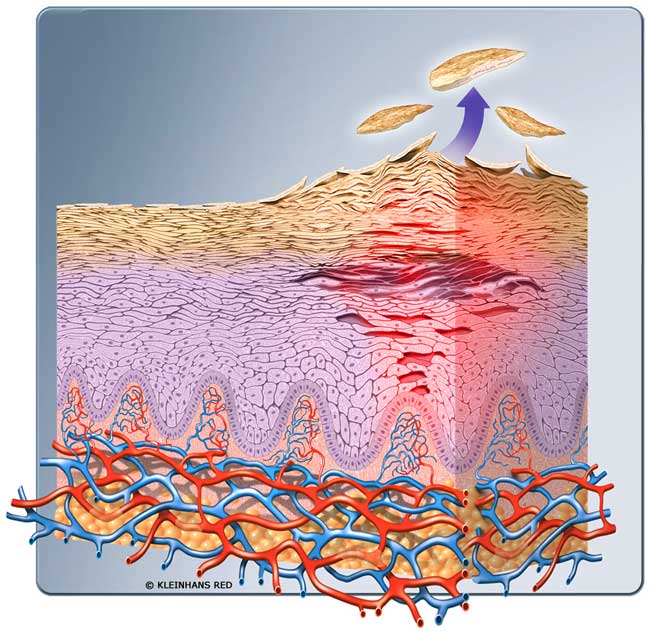Skin Irritation
The skin protects us from mechanical, thermal and environmental influences and thus is of particular importance for us. It is the largest and heaviest organ of the human body and fulfills many tasks and functions. It also has the ability to communicate with the environment. Mechanical, thermal and pain stimuli are perceived by a number of receptors which, as a whole, turn the skin into a sense organ.

Skin irritations arise with disagreeable sensations, a feeling of tension which has not been perceived before, unspecific itching, and an irregular formation of superficial spots. Functionally, this is based on an irritation of the nerve endings in the epidermis, irregularities in the physiological blood circulation, or a changed turgor (pressure) of the epidermal cells. Some consumers complain about delicate, nervous, or sensitive skin – these are skin states which are perceived only subjectively and cannot be measured in an objective manner.
We distinguish between outside influences on the skin’s sensation such as temperature, humidity (air conditioning), air quality (smog), chemicals, clothing and cosmetics, and influencing factors from the inside, such as well-being, mental pressure (stress) or an excessive consumption of caffeine, nicotine, or alcohol.
Our illustration demonstrates one of the final stages of persisting skin irritation. The skin’s surface shows a distinct desquamation and thickening of the horny layer. Various degrees of intercellular edema (spongiosis) have developed in the epidermal layers.
